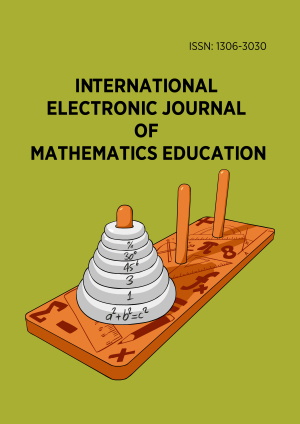Abstract
A lesson experiment was used to investigate how instruction impacted prospective elementary teachers' conceptual understandings of area and volume. Data sources included ten prospective teachers' work on a measurement pre-assessment, lesson activities, and three post-assessments as well as audio recordings of lesson activities. The qualitative analysis consisted of two steps: a "real-time" analysis within the constraints of the week surrounding the lesson and an "intensive-delayed" constant-comparative analysis over the next several months. Findings revealed the prospective teachers enhanced their understandings of area and volume. The lesson experiment led to instructional recommendations for improving the lesson in the future, such as the need to address prospective teachers‟ formulaic tendencies, interpretations about basic units, and perceptions of area and volume measurements as linear quantities. Implications include the value of lesson experiments as an iterative process to contribute to the shared knowledge base of mathematics teacher educators.
License
This is an open access article distributed under the Creative Commons Attribution License which permits unrestricted use, distribution, and reproduction in any medium, provided the original work is properly cited.
Article Type: Research Article
INT ELECT J MATH ED, Volume 9, Issue 2, October 2014, 113-134
https://doi.org/10.29333/iejme/285
Publication date: 12 Dec 2014
Article Views: 4664
Article Downloads: 3322
Open Access References How to cite this article
 Full Text (PDF)
Full Text (PDF)